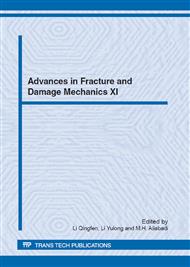p.433
p.437
p.441
p.445
p.449
p.453
p.457
p.461
p.465
An Evaluation on the Restrained Shrinkage of Ultra-High Performance Concrete
Abstract:
Since ultra-high performance concrete (UHPC) is subject to large occurrence of shrinkage at early age due to its low water-to-cement ratio, the mixing of large quantities of powdered admixtures and the absence of coarse aggregates, UHPC presents large risks of shrinkage cracking caused by the restraints provided by the form and reinforcing bars. Accordingly, this study intends to evaluate the shrinkage behavior of UHPC under restrained state by performing restrained shrinkage test using ring-test. The test results reveal that increasing thickness of the inner ring increases the tensile creep at early age leading to the reduction of the average strain and residual stress of the inner ring.
Info:
Periodical:
Pages:
449-452
Citation:
Online since:
November 2012
Authors:
Price:
Сopyright:
© 2013 Trans Tech Publications Ltd. All Rights Reserved
Share:
Citation:


